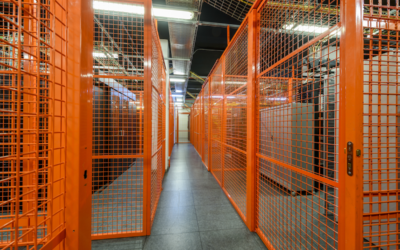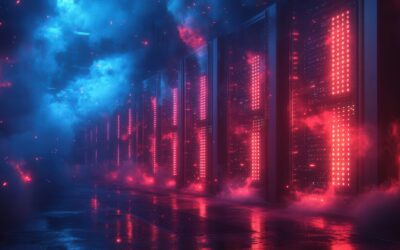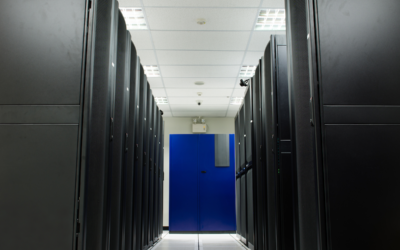Bring Your Own Power is Catching On in the Data Center18 min read

There just isn’t enough power around to cope with projected AI demand. According to research firm Omdia, the installed power capacity of data centers will double between 2014 and 2030. By that time, it will reach nearly 170 GW of which nearly half will be for AI.
“Every current model is probably underestimating what is ahead,” said Ali Fenn, President of data center firm Lancium. “AI’s transformational potential across every aspect of society is fundamentally governed by only one thing: power.”
Those wishing to take advantage of the AI upsurge face big problems in areas such as how to find available power, figuring out how to access it quickly, and working out the best strategies to keep energy costs low.
“The chief obstruction to data center growth is not the availability of land, infrastructure, or talent; it’s local power,” said Pat Lynch, Executive Managing Director, Global Head of Data Center Solutions for commercial real estate firm CBRE.
Fenn noted that it took 30 years for U.S. data center power demand to reach 17 GW. Without AI, it was predicted to double again by the end of the decade. But now, estimates for data center power demand by 2030 range from 50 GW to as high as 80 GW. As a result, data center power consumption will grow from around 2% of U.S. electricity today to 7.5% by 2030.
Now factor in the permitting and approval process which ambles along over many years and the fact that 60 GW of traditional electrical output is forecast to come offline in the Northeast alone by 2030 due to faulty estimates of the pace of the energy transition to renewables. Other states are also retiring traditional generation assets. There just isn’t enough power for new data center demand.
BYOP Becomes a Necessity
An increasing number of power utilities are unable to meet current data center power demands. The BYOP concept – Bring Your Own Power – is looking more and more like a necessity in some areas to solve grid reliability and power availability issues.
Loudoun County, Virginia, for example, has the highest concentration of data centers in the world. It lacks the power to add more, yet all the big hyperscalers and colocation providers are keen to expand in the region.
“Due to the cloud and AI, demand is almost straight up,” said Buddy Rizer, Executive Director, Loudoun County, Virginia Economic Development. “We always considered power to be a given in our community and in July of 2022 I got an email from Dominion Energy saying we’re out of power, which stranded billions of dollars.”
In response, major upgrades are being made to the power distribution infrastructure to bring in more power from outlying areas. 15 new substations are being added in Loudoun County. But that still isn’t enough.
“We have companies that are bringing their own power, that are starting to do on site generation, and we’re going to have to think more about that as we go forward,” said Rizer. “I’m big on green hydrogen and I think that technology is coming, but natural gas turbines are more available short-term solution.”
Data centers are resorting to a variety of strategies to solve the power shortage. Some are building a power plant on campus or adjacent to the data center. Combined heat and power (CHP) works well where you can share costs and resources with the local utility or industrial customers. Ford, for example, has been upgrading its campus in Dearborn, Michigan by adding a CHP plant. The local utility DTE Energy built and operates the plant, which provides power to Ford for its data center and office complex. DTE sells the rest of the power to the local market. In addition, steam from the plant is fed to processes within Ford and is also used to generate yet more power by feeding it through a steam turbine.
Another approach is to rent or buy a trailer-mounted power plant that can sit in the parking lot. Companies like GE Vernona, Siemens Energy, Mitsubishi Aero Power, Solar Turbines, APR Energy, Dynamis Power Solutions Life Cycle Power, and Relevant Power supply mobile gas turbine and/or gas engine packages that can be towed onsite. Some provide a couple of MWs and others can go as high as almost 50 MW.
Power By Truck
If there is a lack of pipeline infrastructure, another option is to truck in the power in the form of liquefied natural gas (LNG). A company named Sapphire Gas Solutions, for example, has several data center customers it serves in this way. Some use the LNG solely for backup power in the case of grid interruptions and outages.
“Some customers are off grid and cannot contract grid power,” said Sam Thigpen of Sapphire. “We can provide them with 5 to 100 MW to serve continuous needs.”
With so many metro areas and regions starved for power, data centers will have to get creative to solve their power shortfall. As it can take many years for new utility grid projects to move through planning, approval, permitting and construction, more data centers are adopting a BYOP strategy.
“There isn’t the 20 to 40 GW sitting around that major markets need, waiting for AI to say ‘Give me a contract’,” said Brian Pryor, Managing Director of investment banking firm Houlihan Lokey.
Real-time monitoring, data-driven optimization.
Immersive software, innovative sensors and expert thermal services to monitor,
manage, and maximize the power and cooling infrastructure for critical
data center environments.
Real-time monitoring, data-driven optimization.
Immersive software, innovative sensors and expert thermal services to monitor, manage, and maximize the power and cooling infrastructure for critical data center environments.

Drew Robb
Writing and Editing Consultant and Contractor







0 Comments